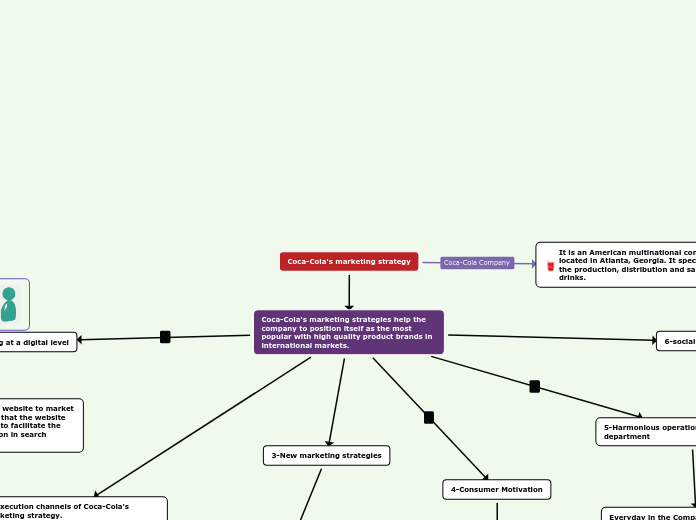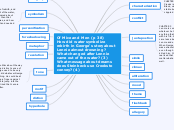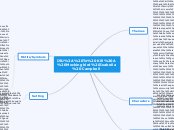folktales
background
work at the center for Chinese studies of the university of California at Berkeley
first set of interviews in a village near Miaoli
second in a village near Tao yuan
no.145~151 in Taipei city
101~144 and 158~188 as well
not able to understand the local Hakka dialect, transcribe the tape into written or spoken manderin in some expert help.
Chapter5 The analysis of the tales
other popular hakka tales not found in the typen
we may be able to say that they were either so rare that we did not inlcude them
we cannot say that these new tales do not occur on the mainland, in some cases we are sure that they do exist
but which occur at least 5 times in hakka material
the story which tells why hakka women love to sing love songs is more interesting
either the girl alone or both of them are changed into rocks
self -respect of the hakka and gives the impression that it is a relatively new formulation
the hakka are known to be the most song-loving ethnic group among the han chinese
a young scholar, either the tang poet liu tsung yuan or sung scholar lo yin, proved to be as good in singing as she was
2 of the new stories deal with the origin or characteristics of the hakka
while non-chinese minorities have elaborate and beautiful tales
what we have is usually given in the form of a pseudo-historical report
the report given s a folk tale is in its pride and its use of modernistic words, influenced by a book
compare hakka tales with the tales and jests reported in the typen
add 14 stories and 5 jests which also found in typen ,but not more often than their mainland varients and which are found in the hakka material at least 5 times
a third jest (typen no.s24)
tells of a burglar who hears in the house a man talking to himself, or a couple talking to one another, believes that the talk refers to himself and runs away without stealing
can easily take on an obscene form
two common jokes both deal with the stupid son-in-law whose wife is clever
the popularity of jests of this type was somewhat surprising to me
the popularity among the hakka does not seem to be matched by a similar popularity among the min-nan people of taiwan
and may indicate a more conservative general attitude of the the hakka
but at the present time, even in villages, arranged marriages are the exception
therefore, assume that these stories somewhat went out of fashion
at least they found that their own husband was inferior to the husband of their sisters
young women sometimes found themselves bethrothed to an unloved, stupid husband???????
in the 1920s and 30s that the mainland material was collected, arranged marriages were, at least in rural areas, still relatively common.
in both jests the importance of food is stressed
the secondz( typen s ,6a, j6)est does not give the clever wife an important role, except that she prepares the gifts which her husband is supposed to bring to her
in one (typen s, 6a:5) the wife is afraid he will not behave during the dinner in her father's house
a variant of the tales about the good and the bad man (typen no.29) 5 times
no taboo in discussing farting among Chinese
but that a loud or stinking fart is often the subject of a joke
stress the importance of good moral behavior,especially between brothers
but only a difference in good luck or in age, somtimes the older, sometimes the younger one has a misfortune, as in the variants to the grand aunt tiger story
while in stories in which there is no difference in moral behavior between brothers or sisters ,
usually the older brother who is bad and who is, thererfore, punished,
grand-aunt tiger(10 times) typen no11
had found earlier that this tale is almost universally known among the min-nan people and is one of the most common mainland tales
the 7th fairy (typen no 34)
the popularity among the hakka may be caused by the film
the chinese version of the swan maiden tale
conclusion
15 hakka stories and jests which are more often reported than one would expect
4 stress values of the family
only 1 extols a value which is not confucian
the poor is destined to become rich by finding a treasure
the belief in fate
not typically confucian
typically confucian virtues
only 1 has no clear moral(zhu ying tai)
of the 26 stories or jests most often reported from the mainland, 15 do not at all appear in the hakka data, and six are rare
except that 2 of the jests were quiet literary and 2 others slightly sexy, and that 2 tales are for certain reasons over-represented in the typen
we could not find an explanation for this lack of so many popular stories,
the difference between the hakka collection and the mainland collection
the tales which are found in hakka material as more often than in the typen can be said to tbe unexpectedly popular among the hakka because the typen contain more than 3000tales
3 jests
the third one come close to typen no201
a father who does not want to spend money on the funeral of his own father but changes his mind when his child intimate they would treat him the same way
a jest
the second variant goes even further in the description of greed
the first one is simple, with only the implicit moral that greed is bad
the monkey divides the sugar
in hakka the main actor is a monkey
even is understood by the illiterates
all from rural
admonition to be harmonious and not to fight
in typen it is told about a teacher
illustrate history by using a cake of student which he eats up as part of his illustration
a more literate one, it presuppose a school in which children learn about chinese history
zhu ying tai (typen no. 212)
her love affair with liang shan bo was the subject of 2 films and several operas and long series of ballads
meng jiangnv(typen no.210)
telling her heroic sacrifice for her husband
this interest comes from a film with the same name which was shown in 1970
belongs with the following story to tales about hidden treasures
the two which we did find among the hakka are rare on the mainland
the other treasure tale
another praise of frugality
the man without money
the central motif seems to be known at least since the 18th century, possibly a thousand years earlier
quite similar to another stories which appreciate frugality but without conflict in it
is a variant of typen no.200
deals again with the tensions between the husband's mother and his wife
hsu men huan
this story was also told by people in taipei who are of min-nan and of hakka origin
in this type the most often mentioned on the mainland mohammedans search for treasures ,does not at all occur in our collection
represented in hakka material as rare as in mainland material
cases of judge pao
seems to intimate that it really happened not too long ago
localize it in a suburb of taipei
the first half is not in the collections of cases of judge pao, which has a parallel to the second half of the story
suspicion that it has a literary source
urban
why is the arse of the monkey red
found in rural as well as in urban areas
more a male story
an animal story similar to the parallel bird stories
the origin of the narcissus
another female story
stories about origin are more liked by woman than by men
women liked stories in which a women play a main role
a fukien story
group of telling about the origin of birds(seem to be female story)
the eagle and the black crane
why can the cat see at night and the cat-head bird only at night?
all from rural respondents
only tell specific characteristics of birds
again a strong moral in it: the good one is rewarded, the bad one punished
the tu-chuan bird
the evil stepmother is blamed
tbe bird is the incarnation of the good, filial boy, her own son
told by all rural
a story about its origin in the classical literature, but it is quite different and is independent of it
about the origin of the cuckoo
husband is bad bird
belonging to typen no.83
filial piety, against the mother of the husband,is a theme harped upon by older women who already are or hope soon to be mother-in-laws
most mentioned by mothers
typically a rural story
is the most common one in our hakka collection and is found in four variants, all of which tell about the origin of birds, mentioned 62 times
the two old men
about the lost axe
rare tale of the type which juxtaposes the good and the bad man, showing that honest man is rewarded, while the dihonest one is punished
grateful animals typenno.16
two versions one is closer to the normal form, the second one more dramatic
the second text
regard as an educational one which tells children that good deeds always will receive a reward
one of the very few show clear elements of modernization
the first text
this story usually has the bee, but other versions from the mainland also tell the same story about an ant
the judge is replaced by the examiner
the good man is about to write his examination papers
the theme of reward for a good deed
all texts come from rural areas, told by more parents than children
cat and dog
fall well into the frame of typenno.13 but has some significanct details
the god of venus occurs often in folk novels and folk plays as a friendly helper'urbanite
the first paragraph underlies a theme which is typical of the hakka: the important of food (father and son)
appeal more to the older generation and more to males than to the younger generation or the females, all but one respondent were rural, it is a rural story
hositility between cat and rat explain why the rat is the first animal of the chinese zodiac
moral:dishonesty will always be punished
found in the villages as well as in the city, much more often mentioned by parents
result is surprising
hakka tales which can be identified as tales in typen, the creation of the universe are least often represented,stories about heros and about helpful animals are found most often
typen no14 , in which a woman is threatened by a monster, but a number of animals console her and help her so that the monster comes to grief, this story is not only widely known in mainland china but also in japan, so that we can surmise that during japanese occupation this story was also introduced to taiwan by japanese children's books.
the jests may be slightly sexy so hakka people might never appreciated, but chapter6 explain they do like these types
in 15 common tales which do not occur in hakka collection we cannt see a common element accounting for this, two tales which may not normally be regarded as tales because only be collected in once specific area of china may explain their absence
the material comes from all parts of china, much is from the area in south china from which the taiwanese hakka emigrated
10 are mentioned 20-29 times
7 do not occur 1 in rare, 2 are common
6 tales are relatively often reported in the typen 30-40 times
3 tales are not mentioned in hakka material at all, 3 are rare
typen contains 10 tales which are mentioned 40 or more times
1 of these most common tales is much more frequent in hakka material than in typen, 2 are relatively common in the hakka material, 2 jests are rare, and 3 tales 2 jests are not reported at all
popular hakka tales from known tale types
fabels filiality stories, anecdotes not originate as folktales but have become folktales in the course of time
myths and legend not mentioned in the
divided the material into tales which refer to the tales in typen chinesischer volksmarchen
Chapter4 extraneous materials unread
chinese do not have a term correspond to folktale,minjiangushi is not clear
got much material which we do not want to include in our analysis, but which still should be mentioned and discussed
other materials
stories about the origin of festivals
folk novels , theatre plays , stories and fables from the literature
folksongs
tales and other materials of foreign origin
come from school books or other recently translated sources
Chapter3 moral values express by the interviewees
be loyal upright, honest and good 44-52没睇完
righteousness(义)
righteousness in the meaning of doing one's duty as one is espected to do it
loyalty(忠)
to friends
to state
be a hero and love your country
some tales stress the ethnic feeling: we are hakka:they are proud of this and proud of their own ancestors
history has always been taught in china as a way to guide the individual toward morality.
connect with local history, about mountains, springs, and other local points of interest are completely rural stories, preferred by other men
stories about fights against the japanese colonial rulers were limited to men over 30
patriotism is a male value
treachery is nagative value
courage, bravery in case of danger, sacrifice of life are in all cases praised as positive values
not as often as we would have expected, especially not among young people
honor the god and worship them
unimportant the role of religion and of relitious practices
tendency of chinese to be "down to earth" when talkin and telling stories, in spite of ample proof to the contrary. that stories tell us to stand on reality, they like to tell own experience against empty stories
people are religious but that they do not like religious stories
like stories which are against superstition they against religion
they are good because gods should be honor
analyze statements which seem to spring out of the material
Chapter2 what are good n what are bad stories?
categories
tales about customs and festivals
hardiest other replaced by non chinese stories or books, these are alive
more by villagers
describe the origin of customs and of festivals
educational stories
stories in which a person mentions a line or give a theme to which one ro more other persons have to make another line with the same grammatical structure and parallel meaning.
romantic stories
who like literary or long stories mention on of the classical novel or plays, no true folktales
mention liangshanpo, its origin by now is certainly a folktale, in which the couple was united only after death
mention dream of the red chamber a novel
dislike them because tragedy makes people sad
animal tales
most people saw them in a deeper sense ,she regard animal stories as symbolic and find in them such social values as hard work and a cooperative spirit
animal stories mean animals interact with other animals. but respondents included in this category also all kinds of stories in which animals interact with human beings
earlier research: animal stories are not typical of chinese
which degree are animal stories known and which kind of stories were known
fighting stories
detetive stories
wuxia
ghost stories
belongs to the more traditional elements in the population, whereupon men like them as much as women dislike them, n younger generation dislikes them much more often than the other generation
more people dislike them
filiality stories(express孝)
23 ex of filiality
specific tales for western feeling is immoral
instill filial piety in children
virture are china's best tradition
show virtues of women, women are the center of the home
one should be a good wife,then one can come to a good end
some extreme stories are not mentioned
stepmother want to eat carp in winter, whereupon the son sits with bare behind on the ice until it is molten and a carp jumps out of the hole
the son is mistreated by stepmother without complains even close to death, father be aware of and want to divorce but the son ask forgive and she is reformed
child by noble behavior rather than revolr can change misbehaving parents
kill the son to feed the grandmother since mother is irreplaceable
chinsese see the piety toward mother, while a westerner's compassion is with the young boy
so more liked by mothers
bout the behavior of son toward their mother
had the book in mind
daughter-in-law problem
womanly values
government launched a campaign for filiality which included the publication of a set of postage stamps, depicting some of the famous twenty four examples of filiality
no yound urbanite mention this kind of story
concertive, typical rural, told by the parents, more by woman than men
historical and patriotic stories( express 忠)
nobody disliked historic stories
they like because the stories remind them of home
the patriotism does not only about their own group, because these stories including those which have no specific relation to hakka
more liked by old generation and by men
quite common in the city
myths and legends
it seems that among hakka people, just like other chinese, don't have a traditon of myths and legends
more popular among parent generation than the young generation
which stories they liked or disliked, which they liked most?
answers were uniformly the same as in the other questions about their own likes
categories
myths legends
which are good for children n y?
whether there are specific stories which are men's or woman's stories ( turkey example shows that men prefer to decamerone type about the sexual adventures of men in the city, whereas women prefer romantic tales
men have their stories and woman as well, but only few women will answer questions.
one say some aspect of lv dong bin , three flirts with miss white peony are for man only
in Taipei singles sample, stories which describe the relation of human with a ghost of the other sex are socially acceptable to discuss some aspects of sex behavior e.g. " the woman and the ghost husband" ," Madame white snake" n "the story of the fox ghost"
woman love Madame white snake highly p24
one said women's stories are told when women pluck tea leaves in the mountains, and they deal with love.
other answers generally said when Hakka tell stories, they are usually all together, there is no separation.
it stress the fact that indeed women in Hakka society were freer than women in other communities and were more often together with men
P23 one man who is a store keeper in kuting sample give the best answer, in which he refers man's stories clearly to sexual stories, but not quiet know what kind of stories these women tell.
interest to study where the borderline is
earlier study shows that some sexual tales or jokes could be told in the presence of women, are not uniformly told in an all-men group
men could hardly be kept from telling darling stories
the answer indicates that every family member present
in material500 stories, no obscene one
Chapter1 telling of stories
To whom are stories told?
when telling a story they like, children prefer to tell one they have heard against they have read
they preferred telling these to stories they had told their own children ten or more years ago, in other words, when children are only 2 or 3 year old
parents' stories were influenced by what have read or seen as a theatre play or a film recently
parents'
the question about the story they liked most indicate the sources of parents, but children don't mention when they were asked from whom they learned stories
certain relatives are never mentioned as storytellers
the sex of oldster is not indicated.
exact relationship of cousins is not given
nor is the exact character of the grandparent
paternal relatives are much often storytellers than maternal
Stronger in the older generation
reflect the strong paternalistic family structure
grandparents are not very important as storytellers
perhaps migration- factors
low life expectancy in earlier time
asked children from whom they had learned their tales
girls learn equally from male and from female
boys learn more often from male relatives
who is still telling folktales
the majority of our Hakka still tell stories and also know at least one animal tale
the good stories tellers in questionnaires of 1970 and 1972 mostly moved away or died in 1972 or denied that they were
rural interviewers prodded more and found children mentioned more stories than parents
urban interviewers were satisfied as soon as the interviewees had named one or two stories
ask them whether they still told stories to the children.
too busy to waste time on the interview
缺乏温情
in ku t'ing sample, most of them live in the city more than four years, are urbanized and have given up storytelling
find a few such men in villages, but they do not often tell stories because of TV in color is typical even in low class family in 1972 children and themselves set in front of TV and enjoy shows.
hard to find a good Hakka stories teller, who knows many folk tales and likes to tell them when asked or when the situation is suitable, known in the community and especially among children
introduction
method
material
social composition
classification do not clearly indicate social class
the husband or father are indicator of social class
questions
?
the number of stories in Taipei samples are much lower than in the other samples
(another project is finding Min Nan families in the same district) try to obtain a regular sample in one case, using ku t'ing sample 174 families 16 individuals
rural Hakka (more than half of interviews)
next 50(51-100) 1971
from the village yung ning li near Tao yuan
first 50 families(1-50)
live in a village two kilometers outside the town of Miao-li
urban hakka (less than half of total interviews)/but not a true sample
(145-157) in 1971 individuals,mainly fathers,
who were willing to answer the questions (158-187) in 1972
some families moved away so it consists of those Hakka families in that district which interviewers could find (interviews Nos.101-144) in 1970
find out all families, which was excluded by the min-nan project, with children between the age of 13 and 20 in ku-t'ing district of Taipei city
then make a random selection from the total body
come from six Taiwan Hakka sources
first five are interviews with hakka
in four of these sources, only those respondents were visited who had in the family at least one child between the ages of 13 and 20, grandparents may be interviewed
to study possible differences between generations
methodology and reasons
analysis of personal diaries and letters?
find values of the common man
May differ from the professed Confucian value system
whether folk tales have recently changed between the parent and the child generations
see whether folktales are one way to get at his values
the values above will be compared with Chinese values
feels that Chinese tend to give answers which are expected rather than their individual attitudes and values i.e., Confucian
feels that these values and attitudes is colored too much by the educated and upper-class people's so-called Chinese values
rectification
asking storytellers who we were able to locate and not on the sample to tell us as many stories as they liked, and at the time and the location they liked
assume a storyteller begins with stories which he thinks are most pleasing to the audience then common one
find in his first stories
express personal character traits of the teller
could not test to which degree such changes were a response of the teller to the felt wishes of his audience
the stories were not collected during natural story-telling situations
continuation of an earlier study,
in which we tried to show that each teller of a story is a creative thinker who changes details in a given story
related to the psychological character of the teller
ask directly the question whether there are such males or female stories, have as many women and girls on our sample as men and boys
testing the hypothesis about they have tales which are specially told among men or among women
put rural and urban, young and old Hakka on our sample
guess that older people may be more traditional than children
Hakka living in village are usually more traditional than those that have moved into cities
also analyze what themselves said about the kind of stories which they liked or disliked and the reasons for this
It may be dangerous for an outsider to analyze the values of another society
more than 500 persons were asked a number of questions
the Hakka were asked which stories they knew, which stories they liked or disliked, for what reason, and which they liked best
find out which stories were really widely known in the Hakka community.
compare the body of widely known Hakka stories with the total tales of Chinese and see whether the Hakka
have stories which are not known to other Chinese
if so,whether these stories could contain values
limited to one ethnic group in China, the Hakka of Taiwan,a minority of three to five million
2.it is assumed that they differ from the other Chinese groups
Hakka regard themselves as the " true" Chinese
as immigrants from the central province of china ( mainly Honan) which they left mainly around the 12th century,but partly earlier and partly later
Subtopic
to find out weather such an assumption is collect
reason:
1.Hakka folklore has been less often studied than the folklore of other ethnic groups in China
Hakka cultivate a strong in-group feeling.
but their folklore were preserved well at the same time
difficult to interview cuz of distrust, as the interviewers were Hakka but the information was not to be used by Hakka
Hakka were believed to be backward or more traditional than the other groups.
ideology
apply a method similar to the survey methods used by sociologists
get around the other two pitfalls
will not go into the problem of unconscious values,
but simply study what people openly express when they are asked about their ideas about tales
disturbing questions are raised when we use psychoanalysis to interpret the unconscious meaning of folk tales
3. if disregard the second problem and take a collection of folk tales, supposedly representing the tales of a given society, does such a collection really represent the tales of a given society?
2.can we assume that a given tale expresses the values of the society to which the storyteller belongs? or does the tale express the storyteller's values only?
1.is subconscious implicitly expressed in all tales in the same way,completely independent of the social structure of the society? or do we first have to know the structure of the society , and the symbolism normally used in that society?
folk tales have been regarded as an expression of the spirit of the people, of the moral and other values of the society









